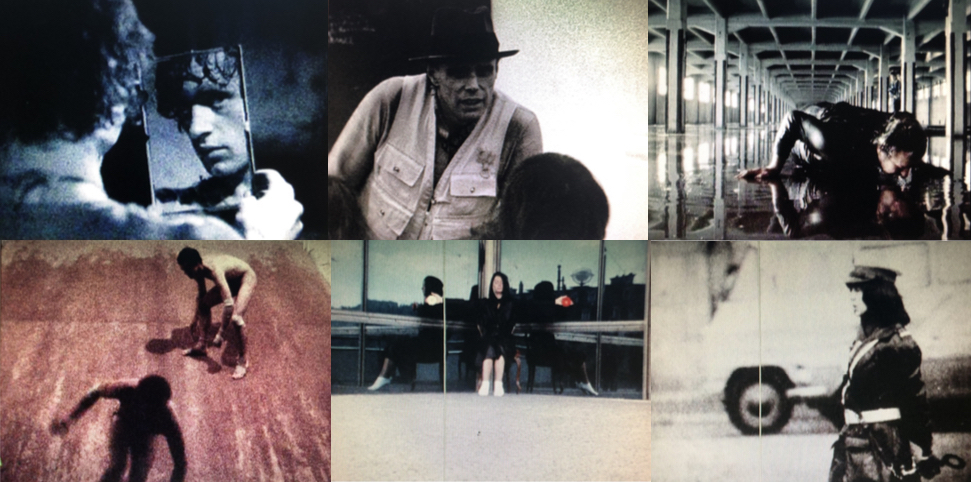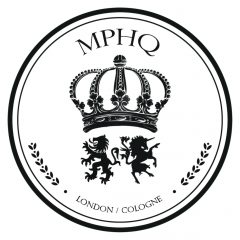
Joseph BEUYS / John BERGER / Stuart BRISLEY / Walter DAHN / Tadeusz KANTOR / Natalia LL / Gustav METZGER / Ken MCMULLEN / Martha PARSEY / Ewa PARTUM / Johannes STÜTTGEN / Boscher THEODOR
Joseph Beuys is considered one of the most important and influential German artists of the 20th Century. To celebrate the 100 year anniversary of his birth in 2021 this exhibition presents film installations and collaborations that emanate from Beuys’ teachings and oeuvre.
Deutsch: WAYS OF SEEING: Film Installations and Collaborations präsentiert Filme, Installationen und Kollaborationen die von der Lehre und dem Oeuvre von Beuys ausgehen. Joseph Beuys gehört zu den weltweit bedeutendsten Künstlern des 20. Jahrhunderts und sein 100. Geburtstag im Jahr 2021 bietet Anlass, den im Rheinland geborenen und arbeitenden Künstler, sein komplexes Wirken und seine internationale Ausstrahlung, neu zu entdecken und kritisch zu befragen. Die Ausstellung bietet eine Plattform die Bedeutung von Beuys für die gegenwärtige internationale Kunst zu ergründen und einen Diskurs über die brennenden Fragen unserer Zeit anzuregen: wie Demokratie und Freiheit zu verstehen sind.
PART 1: BEUYS / METZGER / MCMULLEN
Joseph Beuys in ‘Crowd Sculpture’
Between 1971 and 1972, Ken McMullen filmed three live performances as a collaboration with Joseph Beuys in Düsseldorf. ‘Crowd Sculpture’, ‘Word Work’ and ‘Discussions with a Gun’. First screened at the Tate Gallery, London in 1972.
‘Die Ästhetik ist eine Begleiterscheinung jeder menschlichen Tätigkeit…’
‘Aesthetics are an inevitable accompaniment of every human activity.’
Joseph Beuys
Gustav Metzger in ‘Manifesto 1959’
Gustav Metzger witnessed the rise of Nazism as a small child growing up in Nuremberg, the child of Polish Jews, and escaped to Great Britain aged thirteen in 1939 as a refugee, never to see his parents again, who were murdered in the Holocaust. He trained as an artist before founding auto-destructive art in 1959. The scale of Gustav Metzger’s achievements and his contribution to contemporary culture are clearly demonstrated in Ken McMullen’s film ‘Pioneers in Art and Science’ (2005), as well as highlighting the importance of understanding the destructive impulses in human society.
‘Auto destructive art is primarily a form of public art for industrial societies.’
Gustav Metzger
Gustav Metzger in ‘The Nazi Shadow’
Gustav Metzger on Nazi design and architecture, a subject that preoccupied him and had a lasting effect on his work, in a short extract from the film ‘Pioneers in Art and Science’, 2005.
‘I’m still very interested in Nazi German and Italian fascist design and architecture.
It’s an ongoing interest, it will never leave me and I think it shouldn’t.’
Gustav Metzger
Gustav Metzger on ‘Riefenstahl’
Gustav Metzger on the films of Leni Riefenstahl, films he saw as a child growing up in Nuremberg and that had a lasting and profound effect on his work as an artist.
‘It simply is a masterpiece…the films made a very deep impression on me. They again deal with destruction. I lived in Nuremberg and saw tens of thousands of SA men marching to the Reichsparteitagsgelände’
Gustav Metzger
PART 2: BRISLEY / KANTOR / PARTUM / NATALIA LL
Stuart Brisley in ‘Between’
The British artist Stuart Brisley’s attempts to antagonise the art world took shape in a fruitful meeting of minds with Beuys at the ICA in 1974 at the symposium ‘Art into Society into Art’.
In ‘Being and Doing’ (1984) Ken McMullen and Stuart Brisley collaborate to search out the origins of performance art, connecting it not to modernism but to ancient folk rituals in England and Europe. They testify to powerful behavioural traditions which have survived the transition from an agricultural to an industrial society.
‘Dissension will not take place. There will be no dissension. There will be no disasters. There are no arguments. We are being accounted for.’
Stuart Brisley
Stuart Brisley in ‘Ghost Dance’
A short extract from the film ‘Ghost Dance’ (1983) with Pascale Ogier, Leonie Mellinger, Jacques Derrida, Dominique Pinon, Robbie Coltrane and Stuart Brisley.
Tadeusz Kantor in ‘Lovelies and Dowdies’
‘Lovelies and Dowdies’, shot in Edinburgh in collaboration with Tadeusz Kantor in 1973, is a filmed version of Tadeusz Kantor’s production of the eponymous play by Witkiewicz, ‘Dainty Shapes and Hairy Apes‘ with the CRICOT2 Theatre Company that offers a rare glimpse into Kantor’s groundbreaking work in theatre. This is the performance at which Kantor and Beuys met for the only time.
Ewa Partum in ‘Self identification’
Partum’s public work began in 1969 and continued through the seventies and her films act both as documentation of her performative work and as explorations of film as a medium in line with the feminist avant-garde and structural cinema of the 1960s.
‘In all the situations that I perform naked I want to demonstrate my complete alienation and the fact that I am rejecting the site of male-dominated orderliness.’
Ewa Partum
Natalia LL in ‘Meditation’
Natalia LL, associated with the feminist avant-garde scene of the 1960s in Poland, deconstructs single-frame photographs and satirizes images presented in advertising, television and print in the 1970s and 1980s. This is a short extract from Ken McMullen and Stuart Brisley’s film ‘Being and Doing’.
‘Young polish artists are very sensitive to the changes occurring in the Capitalist world, of which they are well informed. This situation provokes a dilemma between their connection to socialist ethics and everything that that means to them…’
Natalia LL
PART 3: DAHN / STÜTTGEN / THEODOR
Imi Knoebel in ‘Reichsstrasse 51’
A break-in at the studio of Imi Knoebel in an extract from ‘Reichsstrasse 51’ (1991) from Walter Dahn, Johannes Stüttgen and Boscher Theodor. Imi Knoebel, Walter Dahn and Johannes Stüttgen were all students of Beuys at the academy in Düsseldorf.
Rudolf Steiner in ‘Die schwimmende Tasse’
Two cups battle it out to Rudolf Steiner’s ‘Die Rätsel der Philosophie’ in ‘Die schwimmende Tasse’ from Walter Dahn, Johannes Stüttgen and Boscher Theodor. First shown as part of the exhibition ‘Das 21. Jahrhundert’ at the Kunsthalle, Basel
‘So ist es mit allen Dingen; während wir auf das scheinbar Beharrende hinblicken, ist es im allgemeinen Strome des Daseins schon ein anderes geworden.’
‘While we look at what is apparently unchanging, it has already turned into something else in the general stream of existence’
Rudolf Steiner
PART 4: MCMULLEN / BERGER / PARSEY
John Berger in ‘Meditation on Time’
Shot in CERN, the nuclear physics facility in Geneva, Ken McMullen brought John Berger, author of ‘Ways of Seeing’, to encounter the new physics and technologies to be found there. John Berger arrived with the poem ‘Happiness’ by Jorge Luis Borges and the following encounters found form in ‘Art, Poetry and Particle Physics’.
‘Everything happens for the first time but in a way that is eternal. Whoever reads my words is inventing them.’
Jorge Luis Borges
Martha Parsey in ‘Lumin de Lumine’
Shot on location in Particle Accelerator Number One in CERN, this collaboration between Ken McMullen and Martha Parsey turned the Torness Nulcear Power Station into the largest public art installation in Europe. First shown as part of the exhibition ‘Signatures of the Invisible’ at MOMA P.S.1 New York.
Sein oder Nichtsein, das ist die Frage…
To be, or not to be, that is the question…’ Hamlet
Shakespeare
Exhibition curated by Martha Parsey.
